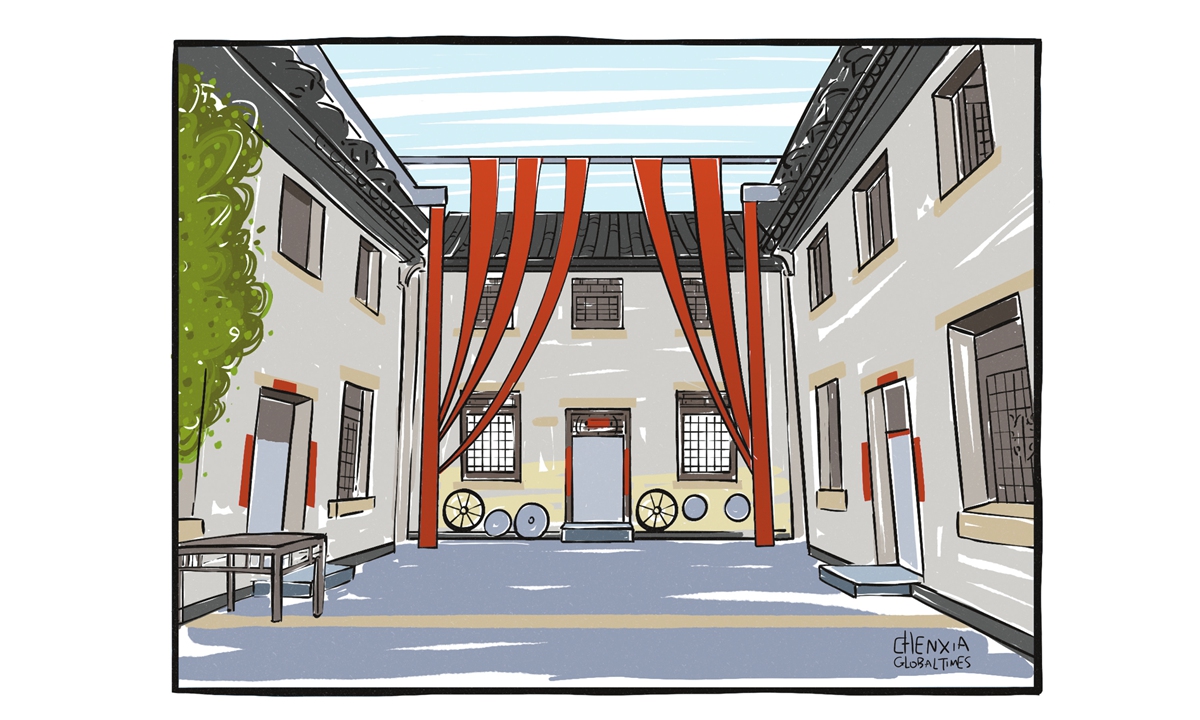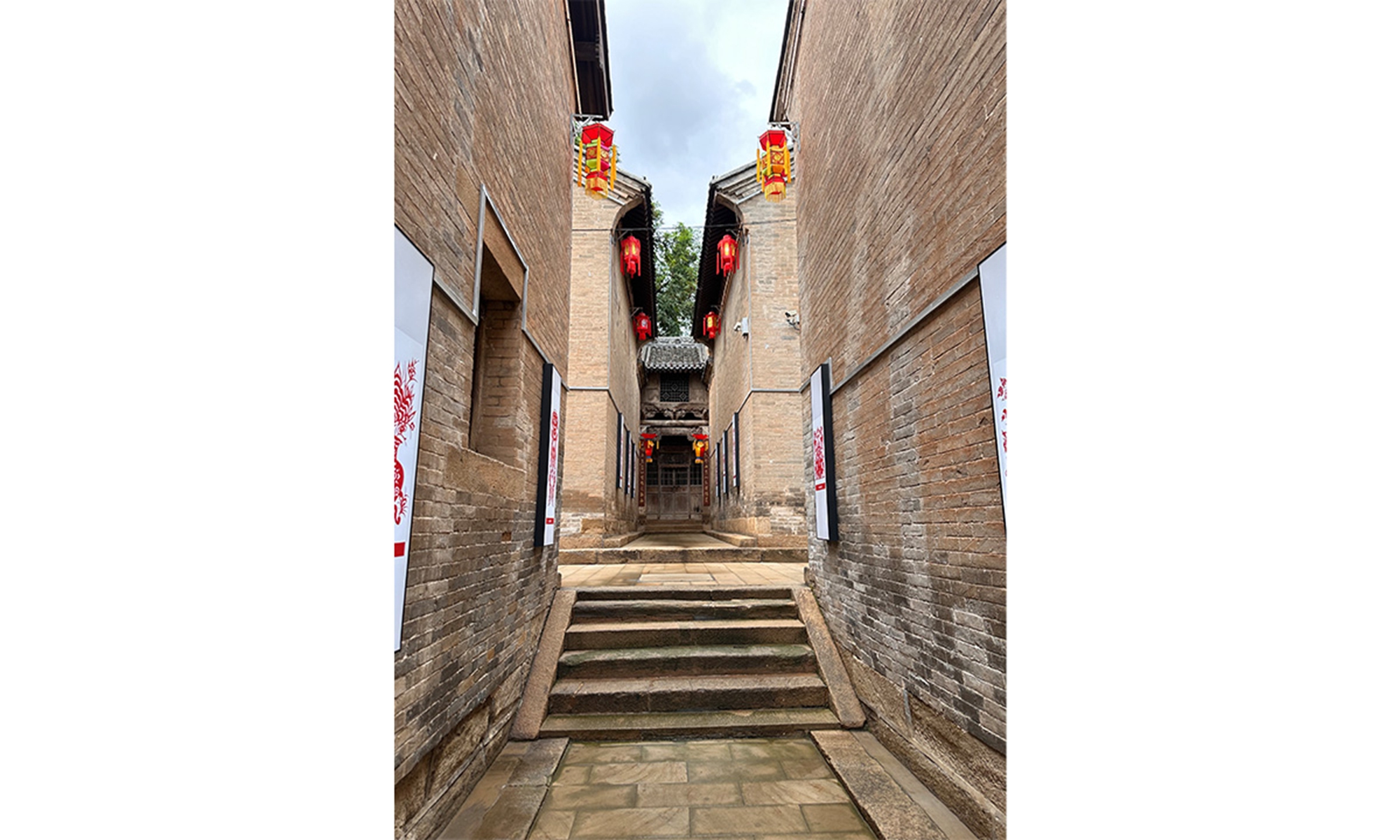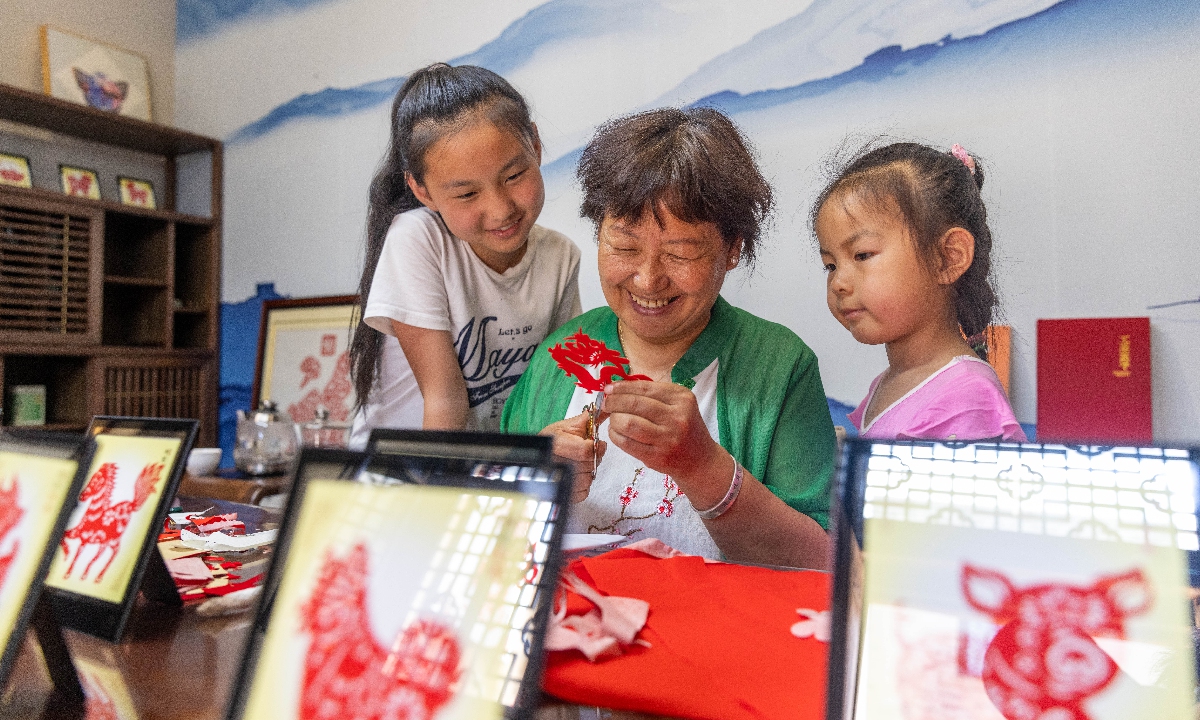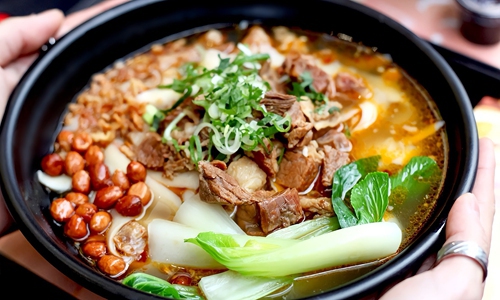ARTS / ART
Ancient villages regain original luster
Surrounded by Paleolithic and Neolithic ruins, a crowd of locals in Tielu Village sit in the shade of the earthy-yellow wall of a decades-old dwelling and enjoy their after-lunch leisure time. Behind them, a banner sporting a promotional slogan for the local Pear Blossom Festival still hangs on the wall, reminding passersby of the vibrant scenes of the festival that has awakened this ancient village.

Stepping into the village at the end of July, pear trees can be seen almost everywhere. Regretfully, I missed the annual Pear Blossom Festival with its diverse performances themed on flowers, but my eyes were still appeased by emerald leaves and earthy-yellow houses interspersed throughout the local pear forest. Pears are one of points connecting the ancient village with the present age and for Tielu villagers, pears are not just a tasty fruit anymore but a unique cultural symbol of their hometown and their own identity.
There are more than 60 traditional villages like Tielu scattered around Gaoping, which enjoy exceptional advantages due to abundant historical and cultural resources, be they tangible or intangible. Each village has been exploring ways to revitalize the region with local flavor. During my journey through these rural areas, I could see that preliminary results have been achieved.
Red silk and red lanterns... many objects dyed in this auspicious traditional color are common decorations in Suzhuang Village, a village to the south of Gaoping dotted with dwellings and courtyards built during the Ming (1368-1644) and Qing (1644-1911) dynasties. This red color embodies the fresh face that Suzhuang has created for itself through a particularly auspicious event - weddings.
According to local historical records, an emperor of the Northern Wei (368-534) rewarded a tree representing romantic love and marriage to the place during a visit in 445. Since then, weddings have been an especially important tradition. Digging deep in the history of local wedding customs, Suzhuang Village is attempting to promote these traditions so that its faded ancient buildings can regain their original luster and significance.

The village offers diverse spaces connected to various wedding rituals, including a museum, a restaurant, a theater and even residential hostels decorated with red paper-cuttings and other auspicious decorations, so that visitors can completely immerse themselves in the atmosphere of traditional weddings passed down over the centuries.
When I crossed over the threshold of a heavy wooden gate, I was told that the yard had once been an accounting house, but now the three rooms had been turned into a tiny museum for exhibitions on wedding-related silver objects and wedding traditions. Standing at the center of the courtyard and staring at the exhibits, I saw employees in gowns pass in and out of ancient buildings as they rushed about their business. These buildings had truly been restored to life.
Another village named Fushan has also focused on bringing new value to these traditional dwellings and courtyards, preventing them from declining amid the dust.
A group of inheritors of local intangible cultural heritage were invited to establish workshops in the dwellings around the village to showcase how clay figurines, paper-cuttings and opera costumes are made.
I saw a piece of red paper soon turn into a rooster in the hands of Zhao Yuxian, an inheritor who said that she has visited almost all the ancient villages in Gaoping and enjoys talking with tourists from far away. At that moment, the significance of protecting these traditional villages became crystal clear to me.

The seniors and children sitting beside the walls of Tielu Village smiled happily at the cameras of visitors. They are seen as one part of the power that is bringing this ancient village back to life through their memories and by passing on local history, legends and life wisdom, which are all foundation of the development of these villages.
Their smiling faces are bringing a fresh feeling to China's traditional villages.
The author is a reporter with the Global Times. life@globaltimes.com.cn

Illustration: Chen Xia/GT
The name of Tielu Village, located in Gaoping, North China's Shanxi Province, dates back to the Han Dynasty (206BC-AD220). Just like other villages scattered around the region, it experienced years of decline amid waves of urbanization in the province, silently sitting in a corner. But now, the village has found a way to become the center of attention with its spacious traditional dwellings, idyllic scenery and ancient ruins that allow it to remain aloof from the modern world.Stepping into the village at the end of July, pear trees can be seen almost everywhere. Regretfully, I missed the annual Pear Blossom Festival with its diverse performances themed on flowers, but my eyes were still appeased by emerald leaves and earthy-yellow houses interspersed throughout the local pear forest. Pears are one of points connecting the ancient village with the present age and for Tielu villagers, pears are not just a tasty fruit anymore but a unique cultural symbol of their hometown and their own identity.
There are more than 60 traditional villages like Tielu scattered around Gaoping, which enjoy exceptional advantages due to abundant historical and cultural resources, be they tangible or intangible. Each village has been exploring ways to revitalize the region with local flavor. During my journey through these rural areas, I could see that preliminary results have been achieved.
Red silk and red lanterns... many objects dyed in this auspicious traditional color are common decorations in Suzhuang Village, a village to the south of Gaoping dotted with dwellings and courtyards built during the Ming (1368-1644) and Qing (1644-1911) dynasties. This red color embodies the fresh face that Suzhuang has created for itself through a particularly auspicious event - weddings.
According to local historical records, an emperor of the Northern Wei (368-534) rewarded a tree representing romantic love and marriage to the place during a visit in 445. Since then, weddings have been an especially important tradition. Digging deep in the history of local wedding customs, Suzhuang Village is attempting to promote these traditions so that its faded ancient buildings can regain their original luster and significance.

The alleys in the Suzhuang Village Photo: Ji Yuqiao/GT
Along the alleys between towering Qing Dynasty courtyard walls, several couples were happily taking wedding photos. Another couple, Li Xiang and his wife also came to Suzhuang to celebrate their 11th anniversary. They decided to wear traditional wedding robes to experience their happiest moment once again.The village offers diverse spaces connected to various wedding rituals, including a museum, a restaurant, a theater and even residential hostels decorated with red paper-cuttings and other auspicious decorations, so that visitors can completely immerse themselves in the atmosphere of traditional weddings passed down over the centuries.
When I crossed over the threshold of a heavy wooden gate, I was told that the yard had once been an accounting house, but now the three rooms had been turned into a tiny museum for exhibitions on wedding-related silver objects and wedding traditions. Standing at the center of the courtyard and staring at the exhibits, I saw employees in gowns pass in and out of ancient buildings as they rushed about their business. These buildings had truly been restored to life.
Another village named Fushan has also focused on bringing new value to these traditional dwellings and courtyards, preventing them from declining amid the dust.
A group of inheritors of local intangible cultural heritage were invited to establish workshops in the dwellings around the village to showcase how clay figurines, paper-cuttings and opera costumes are made.
I saw a piece of red paper soon turn into a rooster in the hands of Zhao Yuxian, an inheritor who said that she has visited almost all the ancient villages in Gaoping and enjoys talking with tourists from far away. At that moment, the significance of protecting these traditional villages became crystal clear to me.

Zhao Yuxian makes paper-cuttings. Photo: Courtesy of Zhang Wujun
Raising my head, I saw grass growing on the roof of a dwelling in Fushan Village, which might harm the stability of the building and finally lead to its collapse. However, I am confident that this sad consequence will not happen in the ancient villages in Gaoping as I believe one day that these villages will become even more and more known among people throughout the country.The seniors and children sitting beside the walls of Tielu Village smiled happily at the cameras of visitors. They are seen as one part of the power that is bringing this ancient village back to life through their memories and by passing on local history, legends and life wisdom, which are all foundation of the development of these villages.
Their smiling faces are bringing a fresh feeling to China's traditional villages.
The author is a reporter with the Global Times. life@globaltimes.com.cn



